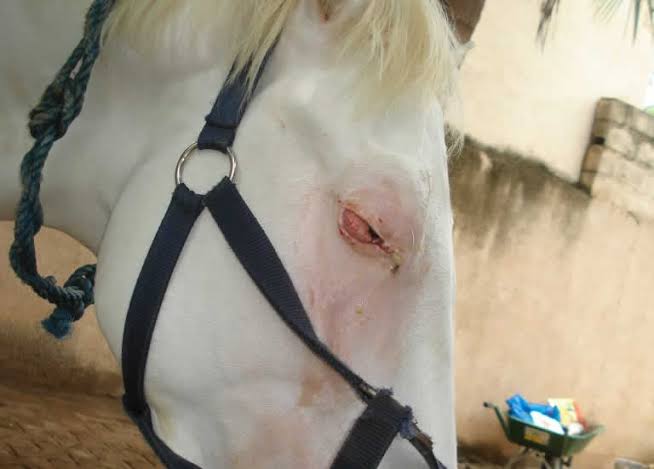
Horse Cleaning and Grooming Tips
Proper horse care goes beyond feeding and exercise. Regular cleaning, grooming, and massage are essential components of maintaining a healthy and happy equine companion. In this comprehensive guide, we will explore the importance and techniques of horse cleaning and grooming. By incorporating these practices into your horse care routine, you can enhance your horse’s overall well-being and strengthen your bond with them.
Benefits of Grooming
Cleaning and grooming a horse offers numerous benefits that contribute to the overall well-being and health of the animal. Here is a list of some key benefits:
Maintains Skin Health
Regular cleaning removes dirt, sweat, and debris from the horse’s coat, preventing skin irritations, infections, or allergies. It helps keep the skin clean, healthy, and free from irritants.
Promotes Circulation
Brushing stimulates blood circulation. Improved circulation promotes better nutrient delivery to the skin and muscles, aiding in their optimal functioning.
Early Detection of Health Issues
Regular grooming sessions allow close inspection of the horse’s body, facilitating the early detection of any injuries, swelling, lumps, or abnormalities. Early detection of health issues enables prompt veterinary attention and timely treatment.
Enhances Coat Condition
Grooming techniques like brushing and bathing remove dead skin cells, distribute natural oils, and promote a healthier and shinier coat. It minimizes the risk of matting, tangling, or excessive shedding.
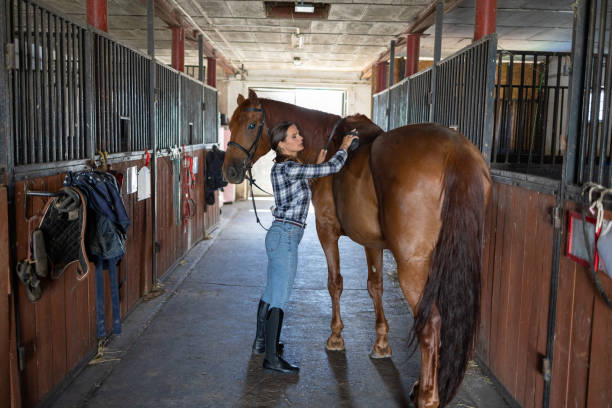
Bonding and Trust Building
Grooming sessions provide an opportunity for bonding and establishing trust between the horse and the caregiver. Spending time together, providing gentle care, and using positive reinforcement can strengthen the relationship and mutual understanding.
Stress Reduction
Regular grooming helps reduce stress and anxiety in horses. The rhythmic motion of brushing, along with the soothing touch, can have a calming effect on the animal, promoting relaxation and a sense of mental well-being.
Hoof Health Maintenance
Regular hoof care helps prevent issues such as thrush, abscesses, and uneven wear, ensuring the horse remains sound and comfortable.
Monitoring Body Condition
Regular grooming allows for a closer examination of the horse’s body condition, including weight, muscle tone, and overall health. It helps track changes in body condition and assists in making adjustments to the horse’s diet or exercise regimen as needed.
Improved Overall Appearance
A well-groomed horse not only looks aesthetically pleasing but also reflects the care and attention given to its well-being. A clean and tidy appearance can positively impact the horse’s image and presentation in shows, competitions, or events.
Mastering Horse Grooming Techniques
Establish a Consistent Grooming Routine
Consistency is key when it comes to horse grooming. Establish a regular schedule to groom your horse, ideally every day or at least a few times a week. By maintaining a routine, your horse will become accustomed to the grooming process, making it more enjoyable for both of you.
Tools and Equipment
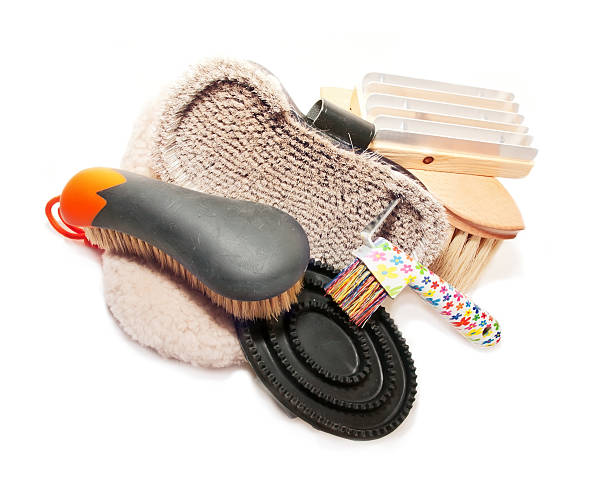
Having the right horse grooming tools and equipment is crucial for effective and comfortable grooming sessions. Here are essential tools and their uses:
- Brushes: Soft-bristled brushes are ideal for general grooming and removing loose dirt and hair from the coat. Stiff-bristled brushes can be used for tougher grime or during shedding seasons.
- Curry Combs: Curry combs, available in rubber or plastic, are used in circular motions to loosen dirt, debris, and dead hair from the coat. They also help stimulate blood circulation.
- Mane and Tail Combs: These specialized combs are designed to untangle and maintain the mane and tail. Wide-toothed combs work well for detangling, while finer-toothed combs are useful for braiding.
- Hoof Pick: A hoof pick with a sturdy metal pick and brush is essential for cleaning debris, stones, and dirt from the hooves. It allows for regular inspection and helps prevent hoof-related issues.
- Clippers: Clippers are used for trimming hair, especially in areas such as the bridle path, fetlocks, and ears. Choose clippers suitable for equine use and follow safety precautions when using them.
Brushing Techniques
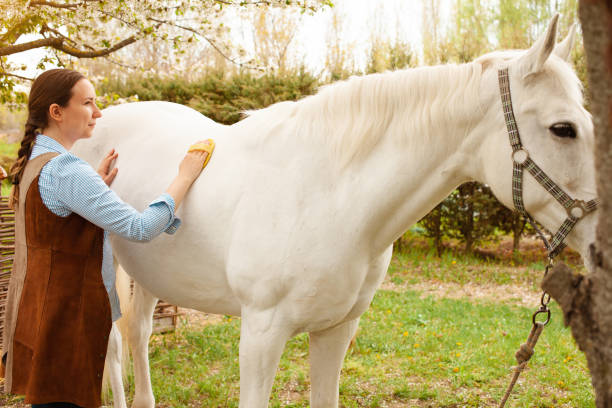
Proper brushing techniques help keep your horse’s coat clean and healthy. Consider the following tips:
- Start with a curry comb or rubber curry mitt in circular motions to loosen dirt and debris from the coat.
- Follow up with a stiff-bristled brush or dandy brush to remove the loosened dirt and hair. Brush in the direction of hair growth using long, sweeping strokes.
- During shedding seasons, use shedding tools or specialized grooming gloves to remove excess hair effectively.
- Use a softer-bristled brush or body brush to smooth and add shine to the coat. Brush gently in the direction of hair growth, paying attention to sensitive areas such as the belly and face.
Mane and Tail Care
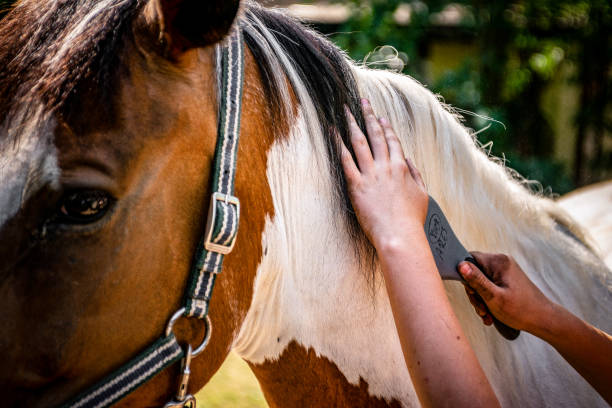
Mane and tail care is an essential part of horse grooming that requires special attention. Proper maintenance not only keeps the hair manageable and tangle-free but also promotes its overall health and appearance. Follow these tips for effective horse mane and tail care:
- Regular Comb-through: Regularly comb through the mane and tail using a wide-toothed comb or brush. This helps prevent tangles and mats from forming. Start at the bottom of the hair and work your way up, gradually working through any knots or snarls.
- Use Detangler Spray or Conditioner: To make grooming easier and keep the hair healthy, apply a detangler spray or conditioner specifically designed for equine use. These products help reduce friction and make combing through the hair smoother. Follow the product instructions for the best results.
- Gentle Brushing Technique: When brushing the mane and tail, use a gentle brushing technique. Avoid excessive brushing or pulling, as it can cause discomfort to the horse and lead to hair breakage. Take your time and be patient, working through the hair in small sections.
- Tail Protection: To prevent tail damage and breakage, consider using tail bags or wraps when your horse is turned out or during transportation. These protective coverings keep the tail hair contained and shielded from rubbing or snagging on objects.
- Regular Trimming: Periodically trimming the mane and tail can help maintain a neat appearance and prevent excess hair from becoming tangled or dragging on the ground. Use sharp, clean scissors or thinning shears and trim conservatively, taking care not to cut too much off at once.
Horse Hoof Care
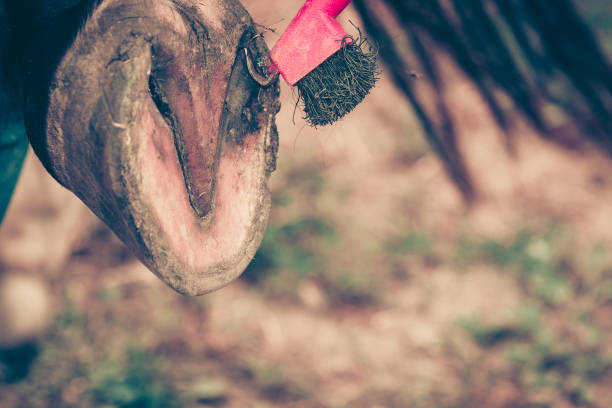
Regular hoof care is vital for maintaining your horse’s overall soundness and preventing hoof-related issues. Here are some important hoof care practices:
- Hoof Picking: Clean your horse’s hooves daily using a hoof pick to remove dirt, debris, and any foreign objects. Pay attention to the frog, sole, and hoof wall.
- Trimming: Schedule routine visits from a professional farrier to trim your horse’s hooves. Regular trimming helps maintain proper hoof balance, prevents uneven wear, and promotes overall hoof health.
- Applying Hoof Oil: Applying a hoof oil or conditioner after cleaning and trimming can help moisturize and protect the hooves. Follow the manufacturer’s instructions and avoid getting oil on the coronary band.
Facial Grooming of Horse
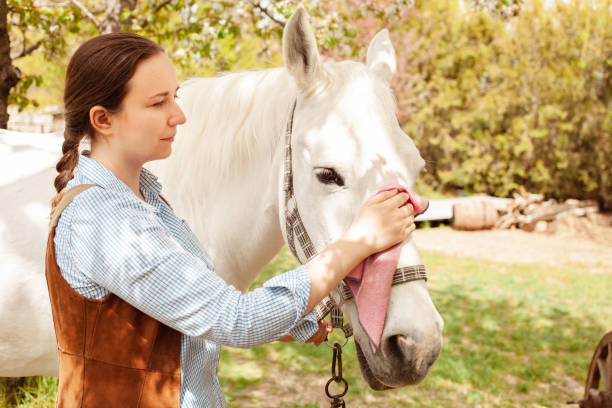
Proper facial grooming keeps your horse’s face clean and comfortable. Here are techniques for cleaning the face, ears, and eyes of a horse:
- Face Cleaning: Use a damp cloth or sponge to gently clean the horse’s face, removing dirt, sweat, and debris. Pay attention to areas around the eyes, nostrils, and muzzle.
- Ear Cleaning: Wipe the inner and outer ear surfaces using a soft cloth or cotton ball dampened with a gentle ear cleaner or warm water. Be cautious not to insert anything into the ear canal.
- Eye Cleaning: Use a clean, damp cloth or specially formulated eye wipes to gently wipe away any discharge or debris from the corners of the eyes. Ensure the cloth is clean, and avoid using any harsh products.
Bathing Your Horse
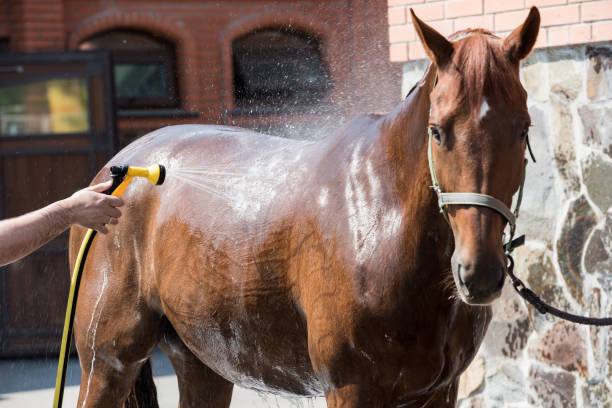
While daily brushing can keep your horse reasonably clean, occasional baths are necessary for a thorough clean. Follow these steps for a safe and efficient process to bath a horse:
- Prepare: Choose a suitable horse shampoo and gather all necessary bathing supplies, including buckets, sponges, and a hose. Ensure the bathing area is secure, with good footing and appropriate tie-up points.
- Wetting: Using a hose or buckets of water, thoroughly wet your horse’s coat, starting from the neck and working your way down to the tail. Take care not to spray water directly into the horse’s face or ears.
- Shampooing: Apply the horse shampoo according to the manufacturer’s instructions, working it into a lather over the entire body. Use a sponge or soft brush to gently scrub the coat, mane, and tail.
- Rinsing: Rinse off the shampoo completely, ensuring no residue remains on the horse’s body. Use a sweat scraper to remove excess water, starting from the neck and working down toward the tail.
- Drying: Allow your horse to air dry in a safe, sheltered area, or use towels to gently remove excess moisture. Avoid vigorous rubbing, as it can cause hair breakage or skin irritation.
Oil Your Horse
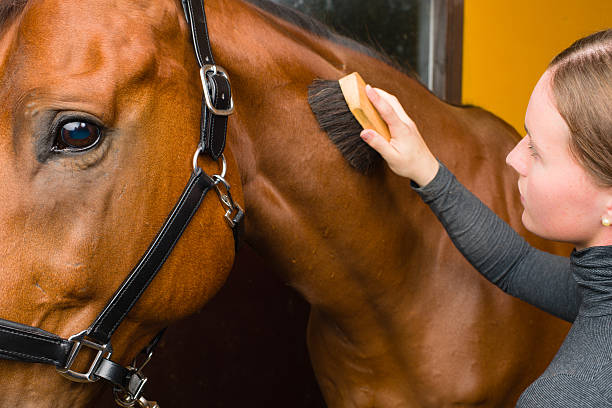
Oiling a horse generally refers to applying oil to its coat and mane/tail for various purposes, such as promoting shine, detangling, and conditioning. Here are some steps to oil a horse’s coat:
- Choose the Right Oil: There are different types of oils available for horses, such as mineral oil, mustard oil, coconut oil, olive oil, and commercial equine coat oils. It’s best to consult with your veterinarian or a professional horse groomer to determine the most suitable oil for your horse’s specific needs.
- Gather Supplies: You will need the chosen oil, a clean bucket or spray bottle for application, a soft brush or cloth, and possibly a sponge or comb for the mane and tail.
- Prepare the Horse: Ensure that the horse is secured properly in a safe and comfortable area, such as a cross-tie or grooming stall. Make sure the horse is clean and dry before applying the oil.
- Apply the oil: Depending on the type of oil and your preference, you can either spray it directly onto the horse’s coat or pour a small amount into a bucket and dip the brush or cloth into the oil. Start by applying a small amount in a discreet area, such as the chest or shoulder, to check for any adverse reactions or allergies.
- Work the Oil Into the Coat: Using the brush or cloth, gently rub the oil into the horse’s coat in the direction of hair growth. Pay attention to areas where the coat might be dry or lack shine, such as the mane, tail, and feathers around the feet. For the mane and tail, you can apply the oil with your hands or use a sponge or comb to distribute it evenly.
- Avoid Sensitive Areas: Do not apply oil to sensitive areas such as the horse’s face, eyes, and under the tail. Applying a little amount of oil around the nostrils can calm down an overzealous horse. Avoid excessive application as it can make the coat greasy or attract dirt.
- Allow Time for Absorption: After applying the oil, let it sit for some time to allow the horse’s coat to absorb it. This can vary depending on the specific oil and the horse’s individual needs. It’s advisable to follow the instructions provided with the oil or consult with a professional.
Basic Equine Massage Techniques

Learning and practicing basic horse massage techniques can provide therapeutic benefits to your horse. Here are a few techniques to get you started:
Effleurage
Effleurage involves using long, sweeping strokes with light to moderate pressure. It’s a gentle technique that helps warm up the muscles, improve circulation, and promote relaxation. Start at the neck or shoulder area and use smooth, rhythmic strokes along the length of the muscle fibers. Gradually work your way down the body, always maintaining a gentle and soothing touch.
Petrissage
Petrissage involves kneading and lifting the muscles using a squeezing and rolling motion. This technique helps release muscle tension and promote deeper relaxation. Use your fingertips, palms, or the base of your palm to gently grasp the muscle and apply moderate pressure. Lift and squeeze the muscle gently, then release. Systematically move along the muscle, covering areas with tension or tightness.
Focus on Areas of Tension or Discomfort
Observe your horse’s body language and response during the massage. Pay attention to areas where your horse displays signs of tension, discomfort, or sensitivity. These may include the neck, shoulders, back, hindquarters, or specific muscle groups. Spend an extra time and attention on these areas, applying gentle pressure and adjusting as necessary based on your horse’s comfort level.
Communication and Feedback
Throughout the massage, maintain open communication with your horse. Observe their reactions, body language, and responses to the different massage techniques. Watch for signs of relaxation, such as a lowered head, softening of the eyes, licking and chewing, or sighs. If your horse shows signs of discomfort, resistance, or tension, adjust the pressure, speed, or technique accordingly. Each horse is unique, and it’s important to respect their individual preferences and needs.
Gradual Progression
When practicing equine massage, start with lighter pressure and gradually increase it as you observe your horse’s response. Pay attention to their comfort level and be mindful of sensitive areas or injuries. It’s crucial to never apply excessive force or use abrupt movements that could cause discomfort or pain.
Seek Professional Guidance
While basic massage techniques can be performed by horse owners, it’s recommended to seek guidance from a qualified equine massage therapist or attend workshops to learn proper techniques.
Conclusion
While grooming is beneficial, it’s important to approach it with patience, care, and respect for the horse’s comfort and safety. Each horse is unique, and understanding their individual needs and preferences is crucial for a positive grooming experience. Approach each task calmly and patiently, rewarding your horse with praise and treats for their cooperation. Remember, grooming is not just about appearances—it’s an integral part of responsible horse ownership and a wonderful opportunity to connect with your horse on a deeper level. Invest the time and effort into horse grooming, and you’ll be rewarded with a healthy, happy, and well-groomed equine partner.





